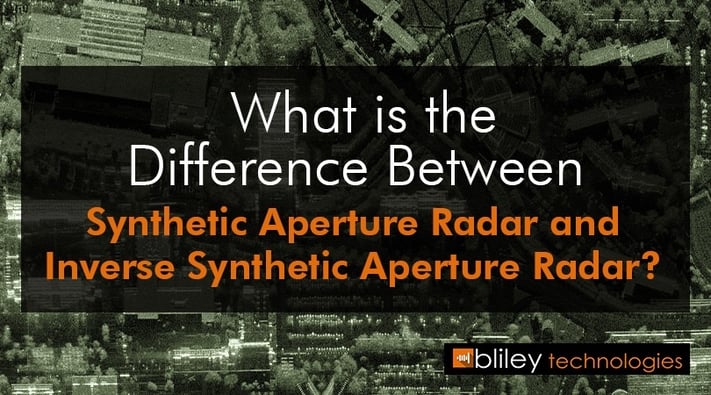
Radar technology has changed dramatically since it was first used in World War II. Over the decades, radar systems have become both more accurate and more specialized. Each new development in radar tech, however, was an attempt to meet the same essential challenge: producing the highest quality and most accurate readings possible in order to understand what the environment looks like, and what is going on within the area being scanned. Synthetic aperture radar or “SAR” has proven to be one of the most successful methods for producing highly detailed scans of landscapes and targets from both air and space. But how does it work, and how is it different from the equally impressive inverse synthetic aperture radar (ISAR)?
What is Synthetic Aperture Radar, Anyway?
Synthetic aperture radar is a type of radar which is used on aircraft and space-based systems like probes and satellites. There is a popular YouTube video which compares synthetic aperture radar to the echolocation abilities of a bat, and in many ways, this is a surprisingly accurate analogy. But rather than navigation, the purpose of synthetic aperture systems is to scan the landscape or target area of interest over which it travels.
Synthetic aperture radar systems use beamforming to aim the signal in a direction that is perpendicular to the path that the system is traveling in. So what does this mean? If one of these systems is operating from a plane, for instance, it is aiming the beam sideways down towards the surface. These radar systems use the movement of the radar antenna over the target area to simulate the effect of a much larger array of antennas; this is what is meant by the term “synthetic” aperture. This technology can create highly detailed two-dimensional and three-dimensional images of landscapes.
In military applications, synthetic aperture radar is used to detect surface features like building complexes and missile sites, as well as the topographical features of the terrain surrounding them. This intelligence can be used in mission planning for future operations.
Synthetic aperture systems are also used in scientific applications. It has been used by NASA to create high-resolution images for astronomical research. Because it can scan through clouds very well, it has been used to penetrate through the dense atmosphere of Venus, and to glimpse the mysterious hydrocarbon lakes on Saturn’s moon Titan, generating stunning, never-before-seen views of the surfaces of these worlds.
What About ISAR?
Inverse Synthetic Aperture Radar operates under the same basic principle but with one key difference: ISAR uses the movement of the target itself to generate its reading, rather than the movement of the radar emitter. ISAR is used in military applications for identifying and targeting objects by their movement. The US Navy uses ISAR in aircraft like the Boeing P-8A to track ships and submarines.
Like conventional synthetic aperture radar, ISAR systems are also used in space-based research to track moving objects. One notable example was when the Arecibo Observatory in Puerto Rico used ISAR to generate highly detailed images of the asteroid 216 Kleopatra, a dog bone-shaped asteroid roughly the size of New Jersey which orbits the sun between Mars and Jupiter.
Whether it’s synthetic aperture radar, phased array, or any other category, all forms of radar require high-quality, low-phase noise oscillator designs to generate the signals they need to function. Radar tech is advancing at a rapid pace in the military and non-military domains, and companies, governments, and researchers who want to make sure they’re getting the most accurate readings need to use only the best components in their systems.
We provide world-class, low-phase noise solutions for radar systems. Some of our designs, like the g-compensated Poseidon 2 OCXO, set new standards for performance and reliability in the field. It’s part of our 85-year (and counting) commitment to superiority in radio frequency design.
Need a quick radar tech refresher? We’ve got your back; check out our free RADAR 101 guide and get yourself up to speed.






